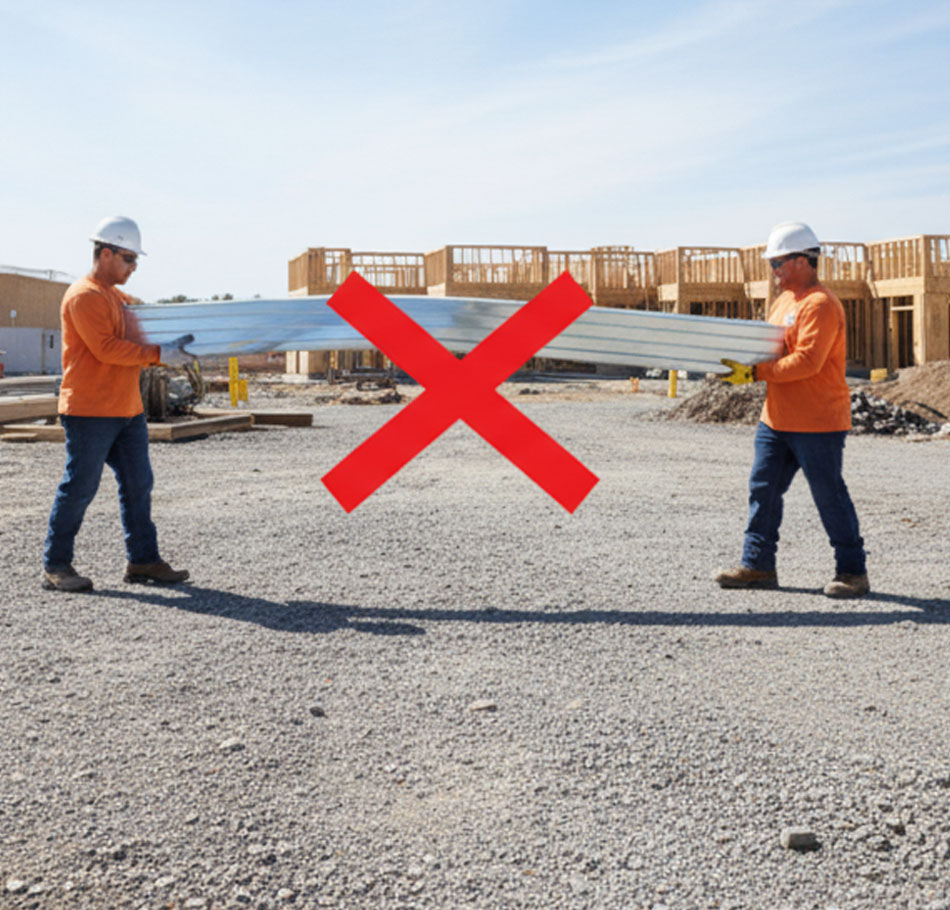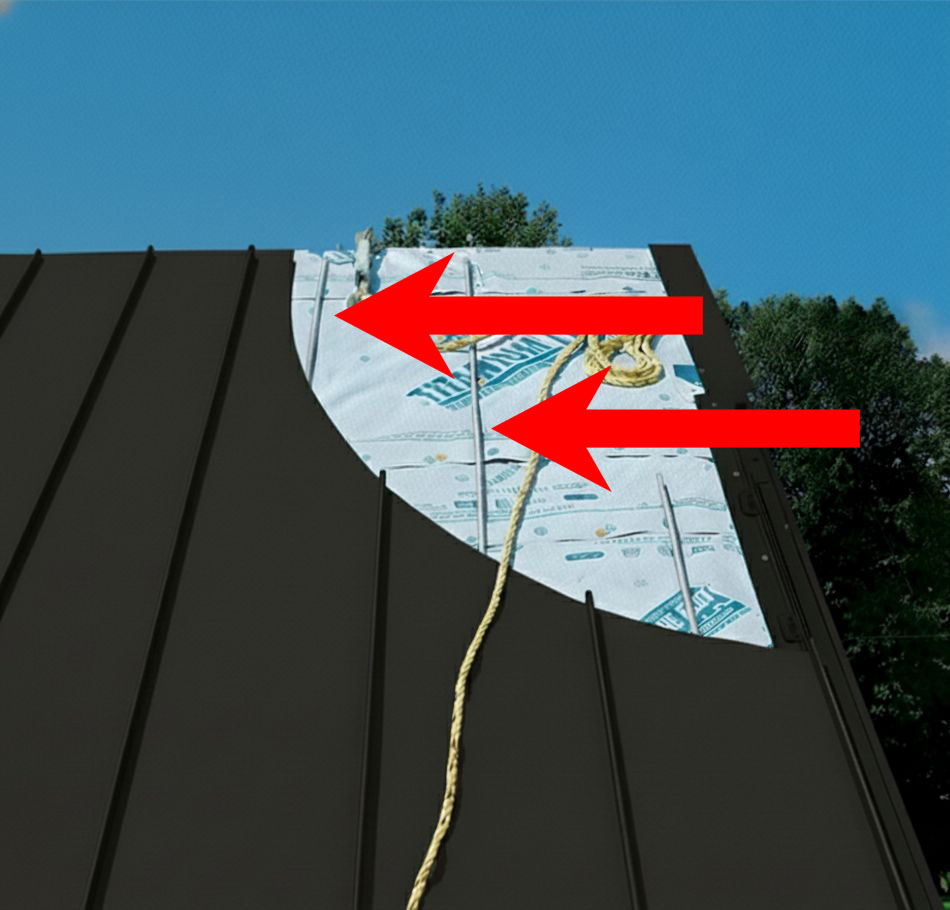








Most homeowners discover oil canning when the light hits the roof just right and they notice a waviness they had not seen before. In many cases, that waviness is present from the day the panels are installed and becomes more noticeable only because you start looking for it. Over time, normal expansion and contraction can make oil canning slightly more pronounced, especially on very wide, very flat panels, but it usually does not progress from “barely noticeable” to “dramatic” unless there is an underlying issue, such as incorrect fastening, structural movement in the framing, or a deck that is settling or warping. The important thing to understand is that oil canning is a stress relief pattern in the metal, not a crack that spreads. Once the panels “find” their shape under everyday thermal movement, the appearance tends to stabilize. Regular inspections to confirm clips, fasteners, and framing are in good condition help ensure it stays a cosmetic issue rather than the sign of a larger problem.
Oil canning by itself does not make your metal roof more likely to leak or fail, even in strong storms. A metal roof’s ability to keep water out depends on the panel seams, underlayment, flashings, attachment system, and the integrity of the panels, not on whether the flat surfaces have visible waviness. That wave pattern does not open up holes or gaps; it is the metal flexing within the panel, not at the seams or fasteners. As long as the seams are correctly locked, the underlayment is intact, and flashings around chimneys, valleys, and walls are detailed properly, oil canning does not change how the roof behaves in wind or heavy rain. What a homeowner should focus on is the condition and design of those weatherproofing details. If your roof is leaking, the cause is almost always at those points, not simply because you can see a ripple when the sun is low.
All of our coil stock, trim, and fasteners come from U.S. mills, often regional roll formers in Tennessee or neighboring states, so you get American-made steel, copper, or aluminum that meets ASTM standards for thickness and coating quality. Buying close to home shortens lead times, reduces shipping damage, and keeps your dollars supporting local workers, all while ensuring the material is engineered for our heat, humidity, and storm cycles.
Color and finish can make a big difference in how visible oil canning appears, especially on standing seam roofs where the flat portions of the panels can reflect light like a mirror. If you already have a metal roof and are considering repainting or recoating it, choosing a darker or more matte finish can help reduce the visual impact of waviness. Light, glossy colors show every reflection and shadow, which exaggerates even minor oil canning. A mid-tone or darker shade, especially in a low-gloss or matte finish, tends to absorb and scatter light rather than reflecting it in a way that highlights distortions. This will not remove the oil canning, but it can make the appearance more forgiving from the driveway or yard. For homeowners planning a new metal roof, this is a good reason to consider how the desired color and sheen will behave in real sunlight, not just on a small color chip.
Most home inspectors and appraisers understand that mild oil canning on a metal roof is common and cosmetic, not a structural defect. When they see a metal roof with some waviness in the panels but no signs of rust-through, missing fasteners, failed seams, or active leaks, they typically note the condition as normal or cosmetic and focus their attention on the functional elements: flashing, gutters, ventilation, and drainage. For buyers, a metal roof is often seen as a long-term positive, even if there is some visible oil canning, because it signals durability and lower replacement frequency compared to shingles.
That said, very severe oil canning that makes the roof look visibly distorted from the street can raise questions. The key is documentation and communication. If you are selling your home and know there is oil canning, it can be helpful to have a roofer’s written assessment stating that the condition is cosmetic only and that the roof is performing correctly. Buyers care most about whether the roof is sound, dry, and likely to last, so framing the issue accurately prevents a purely visual concern from escalating into something bigger than it is.
If you are building a new home or replacing your existing roof, the best time to limit oil canning is before any panels are ordered. Prevention depends on design choices and correct installation practices rather than corrective work after the roof is finished. Start by asking your roofer about panel width and profile. Narrower panels and profiles with pencil ribs or light striations are much less likely to show waviness than wide, smooth, completely flat pans. You can also choose a heavier gauge metal, since thicker steel naturally resists distortion better than thin coil.
Another option many homeowners do not know about is the use of backer rod under the panels. Backer rod is a foam support that sits beneath the flat portion of the panel and helps the metal hold a more uniform shape as it expands and contracts. It does not remove oil canning completely, but it reduces the visual effect on wider standing seam systems by giving the panel a more consistent backing.
The substrate under the metal is just as important. Panels installed over uneven, soft, or poorly fastened decking are far more likely to show waviness. A good installer will inspect the deck, repair or replace any questionable sections, and make sure everything is flat and secure before installation begins. You should also ask how the contractor handles panel alignment and clip spacing. Metal has to move with temperature changes, so the attachment system must allow that movement rather than forcing the panels into a fixed position that creates stress.
Color and finish matter as well. If appearance is a priority, avoid very light or glossy finishes on wide, flat panels, because they reflect light in a way that highlights even minor distortions. Matte and low-gloss finishes soften reflections and make small variations far less noticeable. When all of these decisions are addressed at the planning stage, the likelihood of seeing visible oil canning is greatly reduced and the finished roof looks more controlled and intentional.